
Kouba is a Czech climbing brand founded in 1991, precision manufacturing cams, nuts, and abalaks in their workshop. Kouba may have been around for a while, but until recently they haven't been readily available within the UK. That's all changed with Sgùrr Shop making Kouba's gear range available on their website.
"One of our primary goals at Sgùrr is to keep the cost of trad gear down. We want gear to be affordable for anyone looking to get into trad climbing or build up their rack. For us it took years to build our perfect rack. We relied on hand-me-down relics and rusty crag swag to supply our initial rack, which we have now thankfully retired! Thanks to Kouba climbing, the average cost of a single cam on Sgùrr Shop is £43, compared to an average of £65 per cam at other online retailers."
- Lucy, co-founder of Sgùrr
So what can Kouba's cams bring to your rack? We will cover all you need to know about Kouba's range of cams and help you decide if they're worth a further look.
Kouba Abalaks
The Abalak is possibly the product Kouba is most well known for. This take on a Tricam uses a wire instead of a sling as an attachment point to the lobe but shares a similar tripod geometry of the camming component. Abalaks can be placed as passive protection in a constriction, like a typical nut, but come into their own when used in their active mode as a camming device.
This unique design of protection is designed to 'cam' into breaks and pockets with no moving parts. Abalaks have a narrow V-shaped head and come in a variety of sizes, ideal for protecting horizontal cracks and pockets, particularly piton scars and quarry shot holes, where the traditional cam does not fit. Interestingly, Kouba and Camp are the only two manufacturers of tricam-like devices, and unlike many other types of climbing protection, there is a fair bit of difference between the products.
So how do the two stack up, and is an Abalak worth a look?
The first difference you will notice is the Abalaks' use of a wire. In placing an Abalak the wire acts as a spring, 'opening' the lobe relative to the crack or break which can aid hugely with one-handed placements. The Abalaks' use of a wire also better lends itself to racking on a single carabiner than a Tricam's sling. Anecdotally we have found Abalaks easier to place and rack thanks to the wire stem being less fiddly to handle while on the sharp end.
Comparing the Abalak's specifications with the equivalent Tricam size range, Abalaks typically come in several grams lighter, although neither is optimized for weight and you're unlikely to notice much of a difference between the two. On the other hand, Tricams are rated to a marginally higher strength than Abalaks, but again this is unlikely to make much difference in a real-world fall.
The key differentiator is, therefore, the price point. A Camp Tricam will set you back approximately £20 per cam for the smallest size. However, a Kouba Abalak comes in at £8-10 from Sgùrr Shop. This really adds up over a full set, with 6 Abalaks coming in at £50, compared to £85 for a set of 4 Camp Tricams.
Check out Kouba's Abalaks here: https://www.sgurr.shop/products/kouba-abalak-passive-cams
- Anodised Abalaks £60
- Non-anodised Abalaks £50
Kouba Cams
Kouba also manufactures 4 models of active cams; the Axel, Flex, Permon and Manta. These come in permutations of single and dual-axle models with two stem/trigger types. All Kouba cams are equipped with an extendable sling to reduce rope drag on meandering routes and range from sizes 0.25 to 7 across the various models.
The most popular models are the Axel and Flex. These have a very similar two-finger trigger mechanism to almost all other cams on the market and will therefore feel familiar to most trad climbers. Both the Axel and Flex come with colour-coded slings, tags, and triggers, although the Axel also has anodised lobes. The key difference between the two is the camming mechanism itself. The Axel has the more common dual-axle design, whereas the flex has a single axle.
Axel and Flex cams are great all-rounders, whether you're looking to replace some old cams, build your first rack or fill in some missing sizes, both of these models will feel right at home on your rack and will feel consistent if paired with other brands. The Flex cam specifically is a great option if you have a limited budget to work with, or for new climbers looking to add a couple of cams to their rack without investing a fortune to do so.
The Manta and Permon are Kouba's other models of cams. Similarly to the Flex and Axel, these are also split into anodised dual-axle and silver single-axle models. Both the Manta and Permon use a less common single-finger trigger system with twin stems (also known as a U-stem) attached to the head of the cam. This twin-stemmed design can make the placement feel more stable, however, the single-finger trigger can take some getting used to, especially if you're used to a two-finger trigger.
Twin-stemmed cams used to be much more common, and climbers with slightly older racks may still have the DMM 4CU cams which feature this actuation mechanism. In the last decade, twin-stem cams have become less common, although the increasingly popular Totem cams are bringing this design paradigm back to many peoples' racks.
When it comes down to it the Manta & Flex, and Permon & Axel cams are fairly similar and it's mostly down to a climber's preference on actuation mechanism for which cam they choose.
Kouba only makes their very largest cams using the twin-stem design on the Manta model. With very large cams, twin stems make the cams feel significantly more stable when compared to a single stem, so if you're looking for a mega cam, then a size 6 or 7 Manta may be the cam for you.
So which should you try out? Abalaks are a good pick if you climb a lot of quarried rock as they are excellent at protecting shotholes - think about picking a set up if you are heading to venues like Millstone, North Wales slate, or Nescliffe. Flex and Mantas are affordable first cams to pick up if you're just getting into trad, and the Permon and Axel cams are great if you value a dual axle design or colour-coded kit.
Explore Kouba's cam range on Sgùrr:
- Individual cam units from £38
- Small sets (3 cams) from £114 (£38 per cam)
- Large sets (5-6 cams) from £210 (£42 per cam)

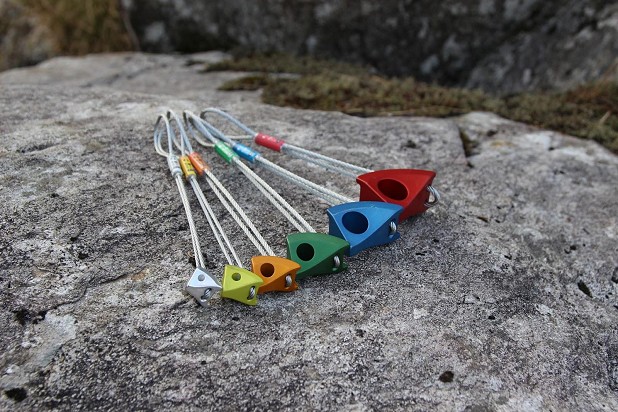
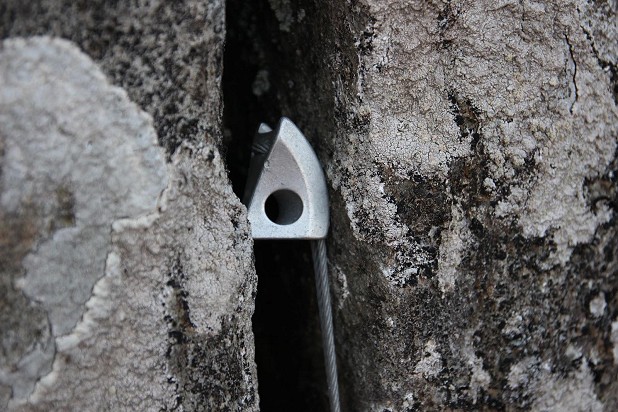
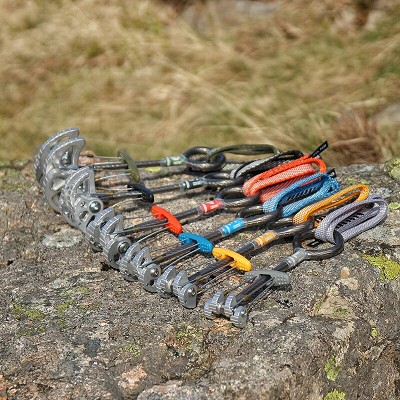
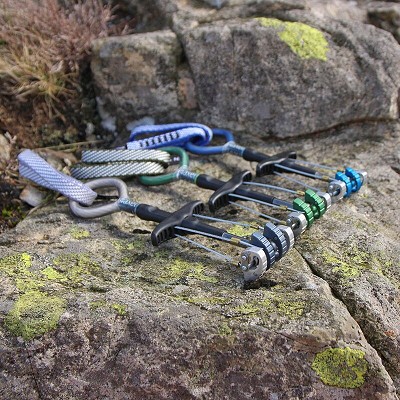

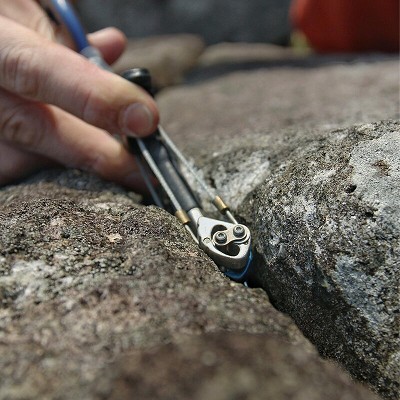
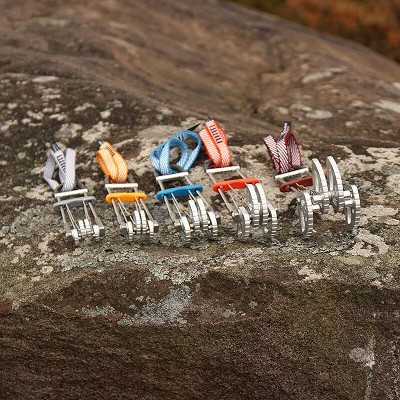
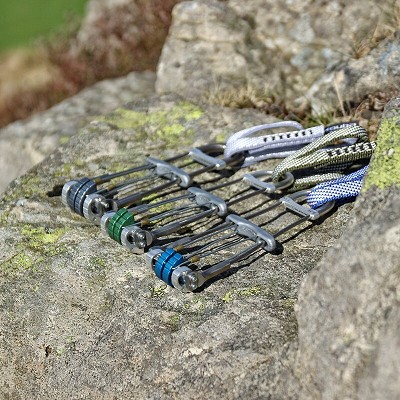


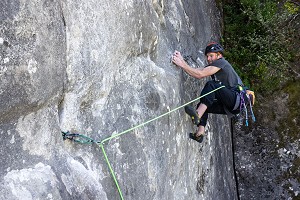

Comments
I can see those tricams taking off for scottish winter, I use them a lot for icy cracks but hate the floppiness, with the cable that's problem solved
I had been looking to add some of the Abalak tricams a few months ago but they were out of stock, got some on the way now. Will be giving them a try this winter.
Works well in that respect but the downside is they lift out much more easily (I appreciate you probably know this) so need to be extended much more than the sling model.
I'm psyched for the Sgúrr guys but it's worth pointing out that these products have been easily available for years under the Rock Empire brand. They're solidly built but heavier and less refined than the likes of BD/DMM/WC which is basically the trade off you make for paying less per unit.
I tested a rack of the dual axle cams for a couple of seasons alongside Dragons. They're fine enough and durable but I would prefer to avoid lugging a double rack up to an alpine route. First world problems.
If I were a student again I'd definitely buy them. People with proper wages will probably be happier with totems and dragons. Or maybe not. Working in the outdoor industry tends to turn you into a bit of a gear snob so possibly I'm out of touch.
I did wonder - the cams looked very familiar. I put this photo up on UKC in 2006 (eek!?!) https://www.ukclimbing.com/photos/dbpage.php?id=47986 having just bought the two biggest Rock Empire Pulsar (IIRC) cams. They look very similar but not identical to https://www.sgurr.shop/products/kouba-manta-cams-set-of-2-large Does Rock Empire still exist? Have they just changed their name to Kouba?
I remember paying just a bit over 20 quid per cam so the prices have gone up a fair amount (although they was hugely cheaper than the WC, DMM and BD alternatives 16 years).
IIRC they are both separate companies. Rock Empire makes their own (other) gear – Kouba had justalways produced cams and stoppers for them, but sold them under their own name as well, at least in some markets. No idea how that arrangement came to be, but it seems to suit both of them, since it had lasted for so long. Kouba as the producer is even mentioned in the product manuals of Rock Empire cams, but who ever reads these more than once ;-)